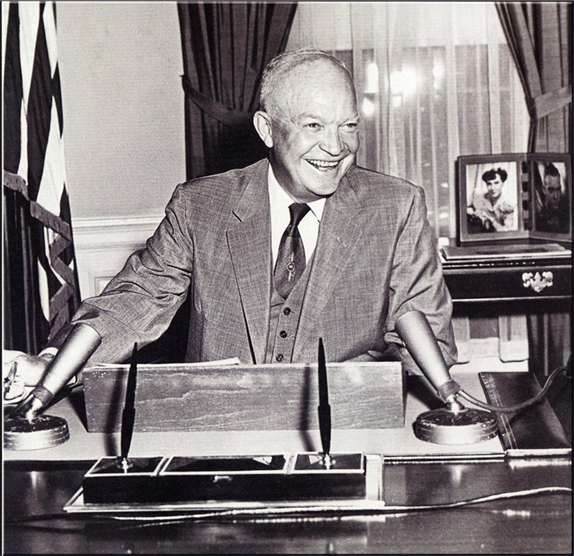
When Harry Truman inherited the presidency after Franklin D. Roosevelt’s death in 1945, he knew he would have to deal with many problems that Roosevelt had left behind. Although Truman was far from prepared for the job, he was self-confident and had the ability to make difficult decisions and to accept full responsibility for their consequences. Truman would need these abilities to face the plentiful economic and social problems that persisted in America following WWII.
One of these economic problems involved strikes. 4.5 million workers who were faced with higher prices and lower wages went on strike in 1946. Truman realized this would cripple the nation, so he took a stand against these strikers even though he, normally, supported organized labor. Once he threatened to draft the striking workers into the army, the unions gave in.
Truman also faced problems in Congress. In the 1946 congressional elections, the Republican Party won control of both the Senate and the House of Representatives. This new Congress now had the power to ignore Truman’s domestic proposals and first exercised their power by passing the Taft-Hartley Act over Truman’s veto.
Social problems were also prevalent during Truman’s presidency. African Americans who had fought for the U.S. during WWII demanded to be treated like U.S. citizens. Truman completely supported their demands and was adamant about achieving equality and rights to people of all colors. He was so supportive of civil rights that he even said if he failed to be reelected (since he was risking his presidency by supporting civil rights), his loss would be justified. He tried appealing to Congress to pass anti-lynching laws, banning poll tax, and creating a permanent civil rights commission. However, Congress was not supportive of these proposals. Truman was undeterred by this rejection. Taking advantage of his position, Truman issued an executive order for integration of the armed forces, among other orders. These actions marked the beginning of the government’s role in acknowledging and dealing with racial issues in America.
Eventually, the 1948 elections came up. Though the nation was upset at Truman for the nation’s inflation and labor unrest, the Democrats nominated him for president in 1948. There was discontent among the ranks of the Democratic Party in response to this and a group known as the Dixiecrats was formed in defiance to this decision. A number of Democrats even left the party to form their own party. Although opinion polls gave the Republican candidate a comfortable lead, Truman refused to believe this and started an aggressive campaign. Surprisingly, this campaign was a success and lead Truman to victory in the 1948 presidential elections.
Once Truman was back in office, he set to work extending Roosevelt’s New Deal with a proposal called the Fair Deal. This proposal contained plans for a nationwide system of compulsory health insurance and a crop-subsidy system to provide a steady income for farmers. Although the majority of these proposals failed to pass through Congress, some of them did. One of the proposed measures that passed was raising the hourly minimum wage from 40 cents to 75 cents.
Despite these political, social, and economic victories, Truman’s approval rating sank to the lowest it had ever been, 23%. This low approval rating was caused by the stalemate in the Korean War and the rise of McCarthyism. When the 1952 presidential elections came around, Truman decided not to run for reelection. This signaled the end of Harry Truman’s presidency.
by Jonathan and Andy




















